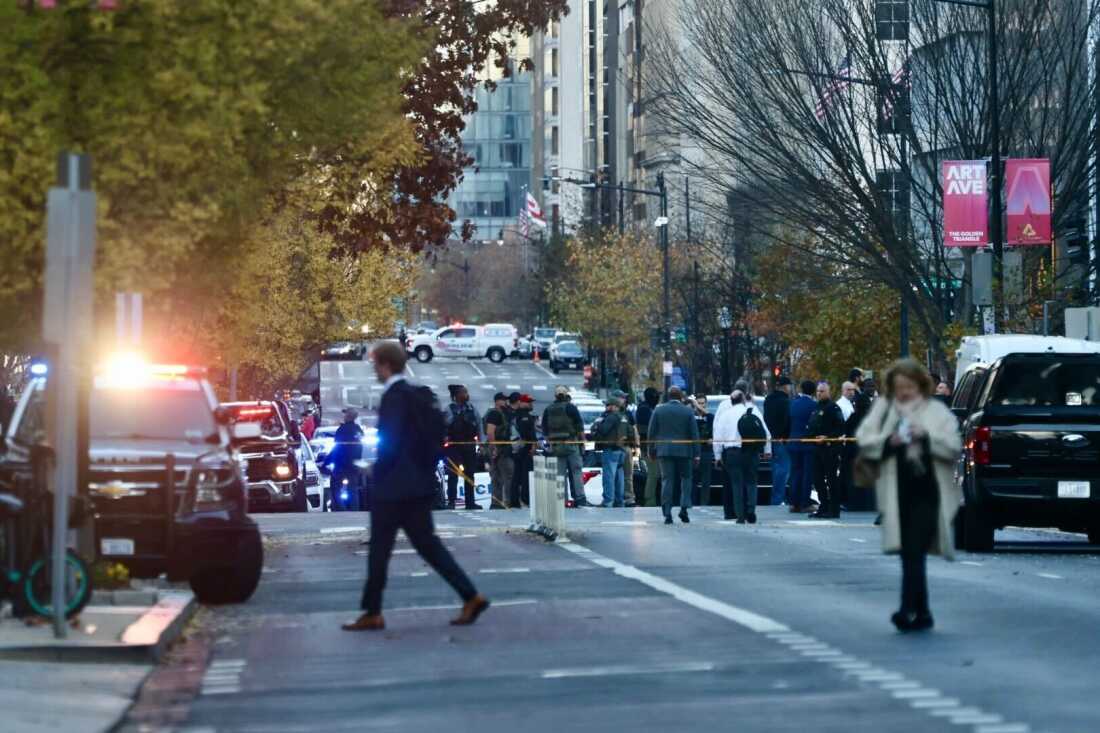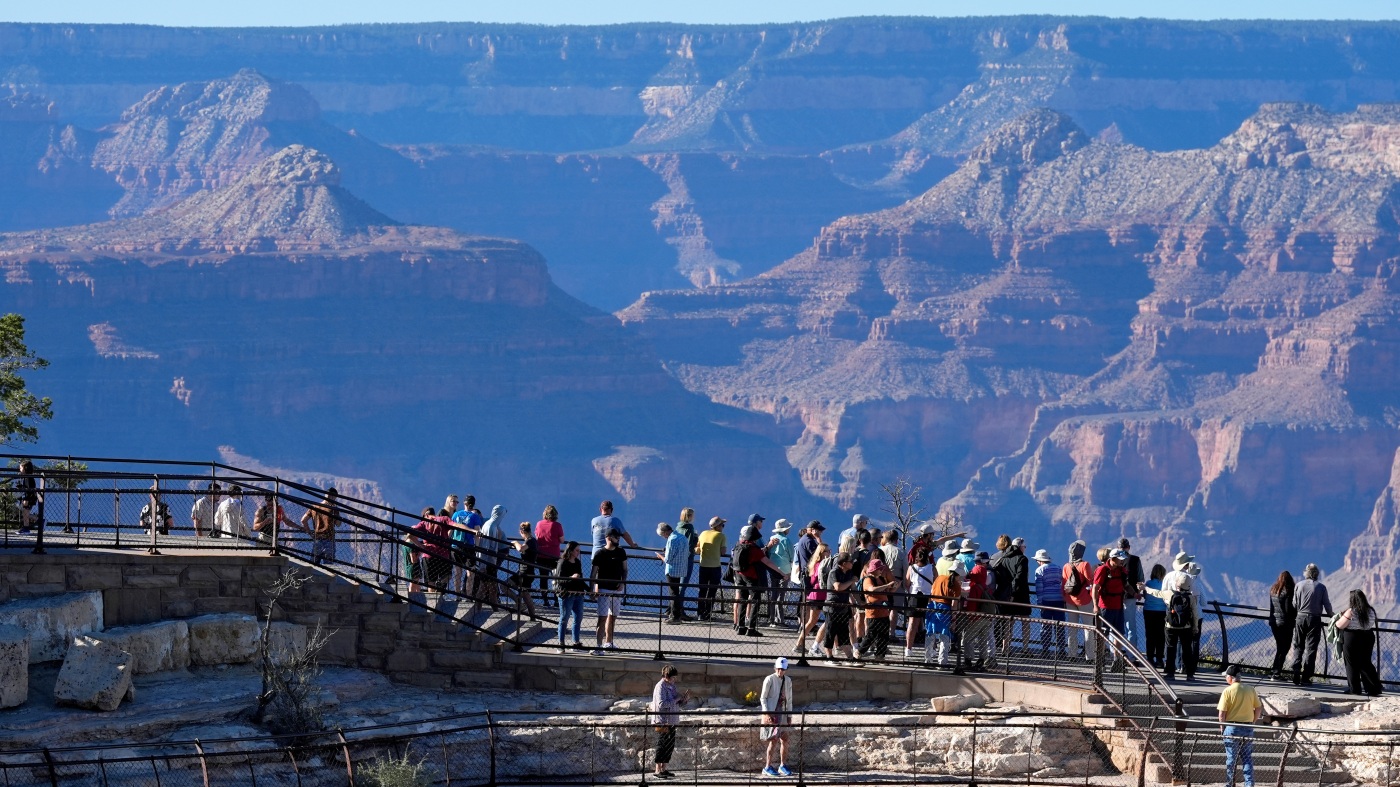News
How to Care for a Loved One With Dementia: 5 Expert Tips

The details of Gene Hackman’s final days may never be known. But officials in Santa Fe, N.M., said on Friday that it appeared that Mr. Hackman, who had advanced Alzheimer’s as well as heart disease, had spent about a week alone after his wife, who was his caregiver, died at home of a rare viral infection.
Mr. Hackman, 95, may have been among the most famous movie stars of the 20th century, but his circumstances point toward a common challenge, according to experts in dementia and family caregiving. Like Mr. Hackman, about seven million Americans have Alzheimer’s, a type of dementia, and their family members, like his wife, Betsy Arakawa, 65, often help care for them as the disease progresses.
Laura N. Gitlin, a behavioral scientist at Drexel University who researches ways to support caregivers, said that when a patient is diagnosed with dementia, their loved ones rarely receive all the information they need.
“No one really explains to the family what the course of the disease may look like, how to prepare,” she said. “No one checks in on the caregiver.”
Knowing how to prepare for this situation can help improve the quality of life for not only patients, as they adjust to life with the disease, but also those who become devoted to their needs. Here are five tips to consider if you become a caregiver for a loved one with dementia.
Stay social.
People with dementia may feel uncomfortable or anxious around faces they don’t recognize, and stigma can lead some families to retreat from social life. But becoming reclusive can worsen the disease, said Dr. Helen Kales, a geriatric psychiatrist at the University of California, Davis. Isolation can accelerate cognitive decline and even puts caregivers at a higher risk for developing dementia themselves.
Dr. Kales therefore recommends that patients and their loved ones keep attending social events and trying new things. A couple she worked with started square dancing when one partner was in the early stages of dementia.
“If there are sort of fresh eyes for a situation and respite, that benefits everybody,” she said.
Set up a caregiving team.
Many primary caregivers feel reluctant to impose, and other family and friends may not know how to help, Dr. Gitlin said. To address this, she suggests holding a meeting and assigning roles. For example, a sibling might plan to call every morning or evening to check in. If the family member with dementia doesn’t answer, they could request a wellness check.
Nancy Goode, executive director of the Margaret Jo Hogg Alzheimer’s Outreach Center in Albany, Ga., which provides adult day care services and support for caregivers, said she tells caregivers to have at least five people they can call for help in an emergency or to regularly help. This could be a friend who might agree to visit every Wednesday for a few hours so the caregiver can run errands.
Seek help from an expert.
When a family member receives a dementia diagnosis, it’s difficult to foresee how the patient’s needs will change as the disease progresses, Dr. Gitlin said. So she recommends caregivers meet with an expert, like a geriatric social worker or a geriatric nurse practitioner, who can evaluate the safety of the patient’s home and how much support will be needed.
That sort of advice doesn’t just come along with the diagnosis, she said, so families have to seek it out and pay for it.
“It seems simple,” she said, “but nobody is given the knowledge and skills that are needed.”
Consider technology that can help monitor your loved one.
In-home cameras and motion sensors can help relatives who live far away check on family members with dementia. For example, a device can be affixed to a refrigerator that sounds an alarm if the door isn’t opened for a long time; another can be worn by patients and send an alert if they fall. It’s important to discuss privacy concerns and data security when considering such tools, which are becoming more advanced and widely available, Dr. Gitlin said.
“We don’t want to make this all about bells and whistles,” Dr. Kales said, “but I do think that we want to use technology as an adjunct to help people as they go on this journey.”
Take care of yourself.
The demands of providing for someone with dementia can be so consuming that many caregivers neglect their own health, Ms. Goode said.
“They’re just worn out,” she said. “They’re just totally exhausted.”
Ms. Goode said caregivers often take on all the responsibilities of helping their patients, and encourages them to ask for help so they can make time for their own medical appointments, rest and wellness.
“If you’re not healthy,” Ms. Goode said, “you can’t take care of them.”

News
Video: Two National Guard Members Shot Near White House

new video loaded: Two National Guard Members Shot Near White House
transcript
transcript
Two National Guard Members Shot Near White House
Two members of the West Virginia National Guard were in critical condition after being shot near the White House on Wednesday. Officials said the gunman was in custody and appeared to have acted alone.
-
At approximately 2:15 this afternoon, members of the D.C. National Guard were on high-visibility patrols in the area of 17th and I Street Northwest when a suspect came around the corner, raised his arm with a firearm and discharged at the National Guard members. We must now re-examine every single alien who has entered our country from Afghanistan under Biden and we must take all necessary measures to ensure the removal of any alien from any country who does not belong here, or add benefit to our country. were able to. After some back and forth, able to subdue the individual and bring them into custody. Within moments, members of law enforcement in the area were also able to assist and bring that individual into custody. At this time, as. I’m live. Yes looks like two National Guard members have been shot with rapid fire. Guys, I need everybody to push back, please. Thank you. I need everybody to push back. Thank you. Shot the bus stop. Need everyone to step back, please. All right, folks, I need you to keep stepping back. Keep coming back this way, please Yeah there we go. There we go. O.K let’s. Let’s go. Come on. That’s bullshit. Look at it. Got it. I just want to have some fun. I’ve never. Done anything like this. So from what I heard, it sounded like an exchange of gun.

By Chevaz Clarke and Jiawei Wang
November 26, 2025
News
2 National Guard members wounded in ‘targeted’ attack in D.C., authorities say

Law enforcement agencies respond to a shooting near the White House on November 26, 2025 in Washington, D.C.
Tyrone Turner/WAMU
hide caption
toggle caption
Tyrone Turner/WAMU
Two West Virginia National Guard members were shot and injured near the White House in Washington, D.C., on Wednesday in what the city’s mayor described as a “targeted” attack. The shooter, who was also shot, is in custody, according to authorities.
Speaking at a press conference on Wednesday evening, Jeffrey Carroll, the executive assistant chief of the Washington Metropolitan Police Department, said the shooting occurred around 2:15 p.m.
Carroll said a gunman came around a corner and opened fire at the Guard members who were on patrol.

Two members of the West Virginia National Guard were shot near the White House on Wednesday, local authorities said. A suspect is being detained at a local hospital.
Tyrone Turner/WAMU
hide caption
toggle caption
Tyrone Turner/WAMU

Washington, D.C. Mayor Muriel Bowser and Executive Assistant Chief of the Washington Metropolitan Police Department Jeffery Carroll stands near FBI Director Kash Patel as he speaks to the media following the shooting of two National Guard soldiers on November 26, 2025 in Washington, D.C.
Tyrone Turner/WAMU
hide caption
toggle caption
Tyrone Turner/WAMU
Nearby Guard members quickly intervened and subdued the shooter, he said. The two injured Guard members and the shooter were later transported to a hospital. Carroll said it was unclear who shot the gunman.
A motive had not yet been determined. D.C. Mayor Muriel Bowser said on X that the person responsible would “be prosecuted to the full extent of the law.”
Earlier on Wednesday, Defense Secretary Pete Hegseth said he was aware that two Guard members were “critically wounded.”
He announced plans to send 500 more Guard troops to D.C. at the request of President Trump.
“This will only stiffen our resolve to ensure we make Washington, D.C. safe and beautiful,” he added.

Members of the U.S. Secret Service and other law enforcement officers stage at the Farragut West Metro station as they respond to a shooting on November 26, 2025 in Washington, D.C.
Tyrone Turner/WAMU
hide caption
toggle caption
Tyrone Turner/WAMU

A view of the scene after two members of the National Guard were shot and wounded near the White House on November 26, 2025. A suspect has been taken into custody.
Tyrone Turner/WAMU
hide caption
toggle caption
Tyrone Turner/WAMU
West Virginia Gov. Patrick Morrisey had earlier said the Guard members were killed, but reversed himself less than half an hour later.
“We are now receiving conflicting reports about the condition of our two Guard members,” he wrote on X.
In a post on Truth Social, Trump said he was aware of the incident. The president was in Florida at the time of the shooting.
“The animal that shot the two National Guardsmen … is also severely wounded, but regardless, will pay a very steep price,” he added.

Attorney General Pam Bondi said on X that federal agents were on the scene of the shooting. FBI Director Kash Patel also said on X that the bureau “is engaged and assisting with the investigation.”
Over the past few months, more than 2,000 National Guard personnel have been sent to D.C. to assist with patrols and beautification efforts.

Law enforcement officers secure the scene after a shooting in Washington, D.C., on Wednesday, Nov. 26, 2025.
Tyrone Turner/WAMU
hide caption
toggle caption
Tyrone Turner/WAMU
More than half of the Guard members were brought in from other states, including about 179 Guard members from West Virginia, according to the military’s Joint Task Force in D.C.
Trump began deploying troops to the nation’s capital in early August over concerns about the city’s crime rate. Last week, a federal judge ruled that the use of troops in D.C. was unlawful and ordered an end to the deployment. The judge’s preliminary injunction has not yet taken effect to give the Trump administration time to appeal.
This is a developing story and will be updated.
News
National Parks to raise fees by $100 for international tourists to popular U.S. parks

Tourists flock to Mather Point at Grand Canyon National Park, Oct. 1, 2025, in Grand Canyon, Ariz.
Ross D. Franklin/AP
hide caption
toggle caption
Ross D. Franklin/AP
WASHINGTON — The National Park Service said Tuesday it is going to start charging the millions of international tourists who visit U.S. parks each year an extra $100 to enter some of the most popular sites, while leaving them out of fee-free days that will be reserved for American residents.

The announcement declaring “America-first entry fee policies” comes as national parks deal with the strain of a major staff reduction and severe budget cuts, along with recovering from damage during the recent government shutdown and significant lost revenue due to fees not being collected during that time.
The fee change will impact 11 national parks, including the Grand Canyon, Yellowstone and Yosemite, according to the U.S. Department of the Interior.
As part of the changes, which are set to take effect Jan. 1, foreign tourists will also see their annual parks pass price jump to $250, while U.S. residents will continue to be charged $80, according to the department’s statement.
Interior Secretary Doug Burgum said in a post on the social platform X that the changes make sure U.S. taxpayers who support the park service “continue to enjoy affordable access, while international visitors contribute their fair share to maintaining and improving our parks for future generations!”
A White House post on X laying out the increased fees ended with the phrase, “AMERICANS FIRST.”

The announcement follows a July executive order in which President Donald Trump directed the parks to increase entry fees for foreign tourists.
“There’s a lot to unpack in this announcement, including many questions on its implementation – all which NPCA will raise with the Department of Interior,” Kati Schmidt, a spokesperson for National Parks Conservation Association, said in an email.
The U.S. Travel Association estimated that in 2018, national parks and monuments saw more than 14 million international visitors. Yellowstone reported that in 2024, nearly 15% of its visitors were from outside the country, which was down from 30% in 2018.
The money made off the new fees will help support the national parks, including with upgrading facilities for visitors and maintenance, according to the statement.
The “resident-only patriotic fee-free days” next year include Veterans Day, which was one of the parks’ eight free days open to everyone in 2025. The Department of the Interior had announced those days by saying they wanted to ensure that “everyone, no matter their zip code, can access and enjoy the benefits of green spaces and our public lands.”
-

 World1 week ago
World1 week agoFrance and Germany support simplification push for digital rules
-

 News1 week ago
News1 week agoCourt documents shed light on Indiana shooting that sparked stand-your-ground debate
-

 World1 week ago
World1 week agoSinclair Snaps Up 8% Stake in Scripps in Advance of Potential Merger
-

 Science5 days ago
Science5 days agoWashington state resident dies of new H5N5 form of bird flu
-

 World1 week ago
World1 week agoCalls for answers grow over Canada’s interrogation of Israel critic
-

 Culture1 week ago
Culture1 week agoDo You Recognize These Past Winners of the National Book Award?
-

 Politics1 week ago
Politics1 week agoDuckworth fires staffer who claimed to be attorney for detained illegal immigrant with criminal history
-

 Technology1 week ago
Technology1 week agoFake flight cancellation texts target travelers
























